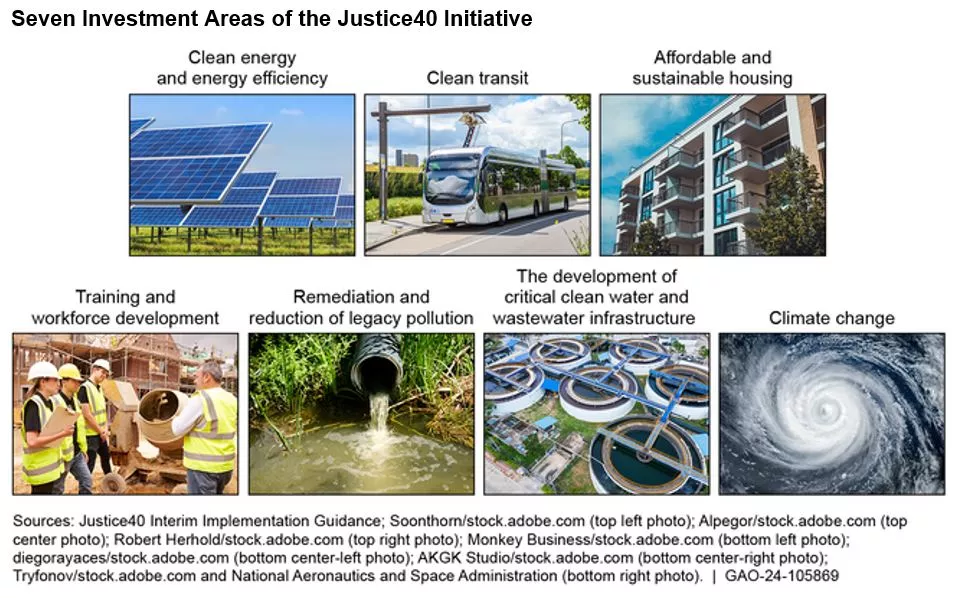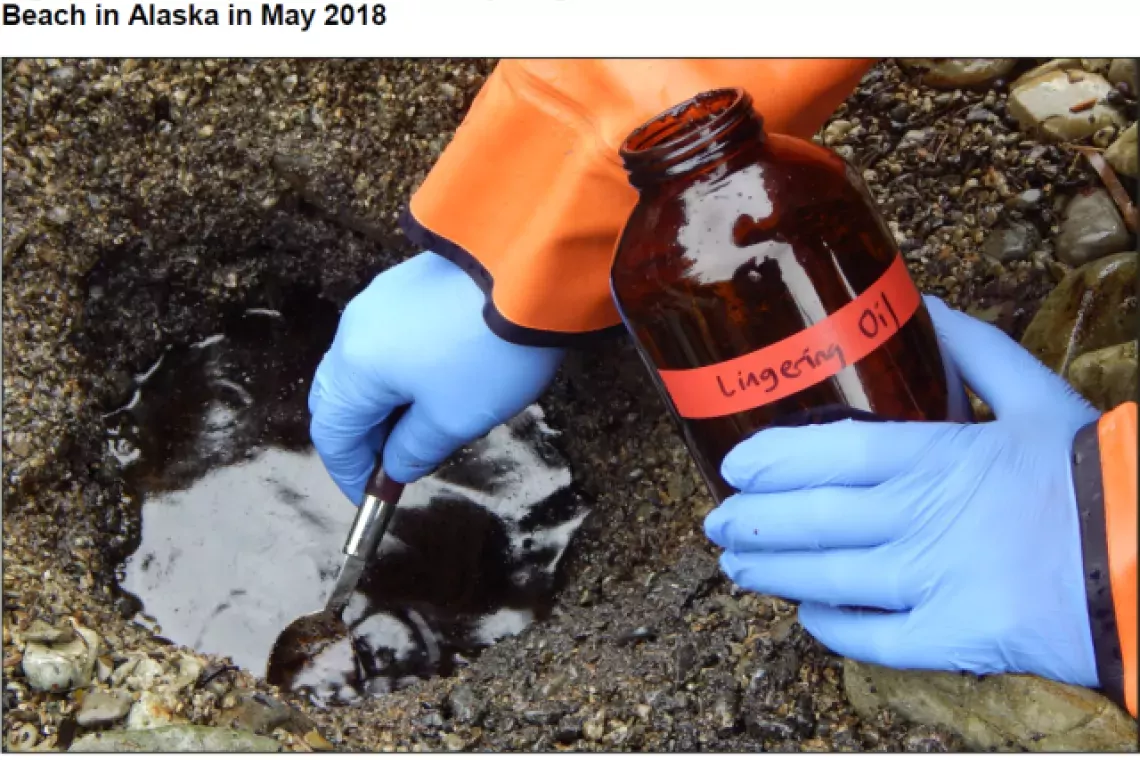Efforts to Address Current and Historic Environmental Injustice Need to be Strengthened
Historically marginalized and underserved communities often face greater socioeconomic and environmental burdens such as disease, poverty, and pollution. Some communities are exposed to higher levels of air pollution from diesel exhaust, live closer to hazardous waste facilities, experience higher rates of asthma and heart disease, or face higher housing and energy costs.
The Justice40 Initiative, along with other recent environmental justice efforts, aims to secure environmental justice and spur economic opportunity in these communities through federal investments. The initiative, established in 2021, currently includes 500 programs in 19 federal agencies involving billions of taxpayer dollars invested in communities across the country.
How is this relatively new initiative working so far? Today’s WatchBlog post looks at our two recent reports on Justice40.
Image

What is Justice40 and how does it work?
Justice40 is not a new program or fund. It’s a new government-wide goal that 40% of the benefits from federal grants, loans, and other investments in the seven areas shown below flow to marginalized and underserved communities.
Image

For example, Justice40 programs include the Department of Energy’s Rural Energy for America Program. This program provides grant funding and guaranteed loan financing to agricultural producers and rural small businesses for renewable energy systems and energy-efficient equipment. Another example of a Justice40 program is the Department of Transportation’s Reconnecting Communities Grant Program. This program provides funding to retrofit or mitigate the impacts of highways or other transportation facilities that cut through communities.
Since the Justice40 Initiative is relatively new, we looked at how aspects of it are being implemented and found areas where improvements could be made. We think that the guidance and tools developed for agencies could be more effective, timely, and consistent. And there are opportunities to improve collaboration with environmental justice councils by improving communication and better defining roles and responsibilities.
We also think that more could be done to monitor, assess, and communicate whether agencies are effectively implementing Justice40 and evaluating whether the government is moving closer to the 40% goal. We made 15 recommendations to address these and other issues in our January report.
What impact has the Justice 40 Initiative had on communities so far?
Underserved communities, such as federally recognized Tribes and other historically marginalized people, face a disproportionate number of barriers to accessing federal funding. This includes funding available under Justice40, which is geared toward them.
In our previous work, we have consistently found that Tribes face barriers accessing federal programs—such as cost-share requirements, lengthy application processes, unclear or outdated guidance on allowable uses, and eligibility restrictions.
Some of the same barriers existed when we looked at Justice40. For example, officials from one Tribe said that applying for a FEMA program took a dedicated staff person 60 days to navigate the application system because it was designed for states, not Tribes. A representative from another tribal organization told us that because of these barriers, tribal entities that greatly need the funding and could benefit from it the most are less likely to apply. And when they do apply, they generally have less robust applications.
Justice40 also emphasizes community involvement in decision making by instructing agencies to consult with community stakeholders in determining the benefits of these programs. These efforts can also help spread the word about Justice40. Though, we learned that awareness of these efforts was mixed among the Tribes, Indigenous communities, and tribal organizations we interviewed. Specifically, some of the Tribes and tribal organizations we met with said they were not aware of Justice40 or did not learn about it from federal agencies. We also found that some of the agencies that work with Tribes have not consulted with them about the implementation of the Justice40 Initiative.
We believe that agencies could improve their outreach and awareness efforts. For example, agencies should take actions, with tribal input, to identify and recommend legislative changes to address statutory and regulatory barriers to accessing funding. Agencies should also increase outreach—including consulting with Tribes and engaging with Indigenous communities. This would allow federal officials to obtain meaningful tribal input and incorporate it in future Justice40 efforts. It would also increase Tribes’ awareness of, and ability to access, federal programs, thereby helping achieve Justice40’s underlying goal to address longstanding disparities and support Tribal Nations' efforts to provide vital services to their citizens.
Learn more about our work and recommendations by checking out our April report.
- GAO’s fact-based, nonpartisan information helps Congress and federal agencies improve government. The WatchBlog lets us contextualize GAO’s work a little more for the public. Check out more of our posts at GAO.gov/blog.




